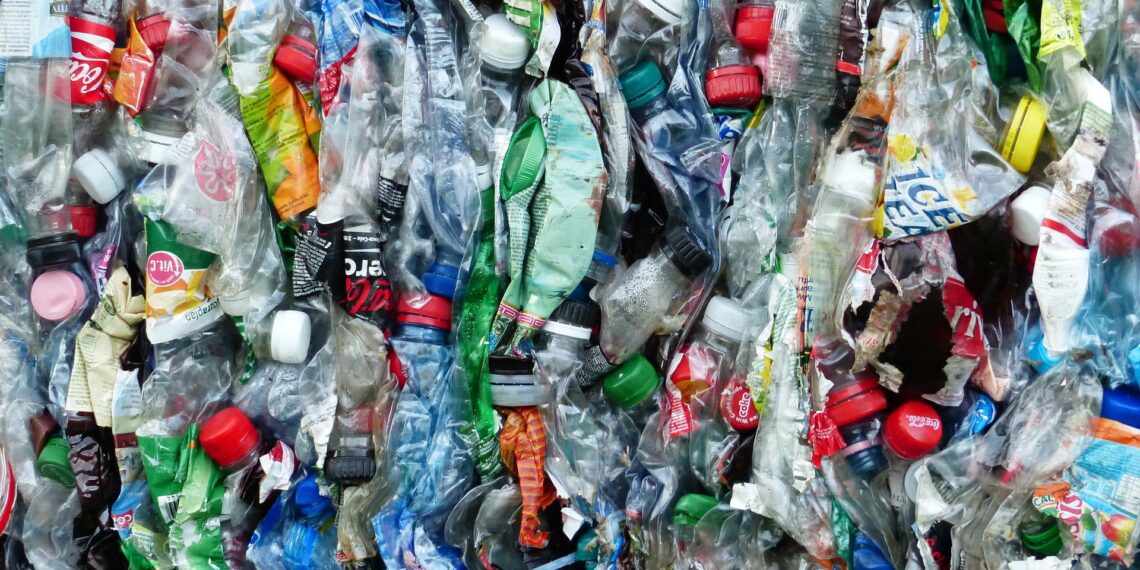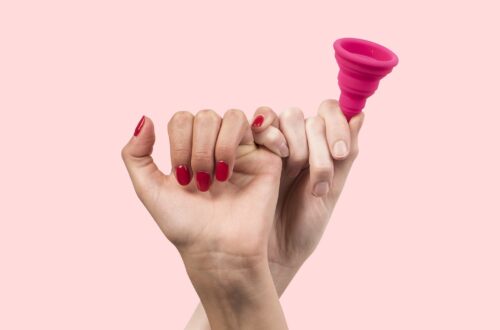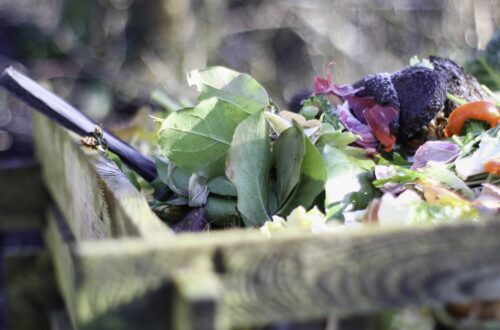
14 Places Plastic is Hiding in Your Life
Plastic is everywhere! From your water bottle to your remote control, it’s hard to do anything in the modern world without using some form of plastic. Lots of the plastic in our lives is obvious, while others, not so much. So I’ve put together a list of 14 places you may not realize plastics may be hiding in your life.
1. Tea Bags
This one probably shocked me the most out of everything I put on my list, mainly because up until I learned there was plastic in teabags, I was under the impression tea bags were compostable. While not all teabags contain plastic, the majority of teabags are up to 25 % plastic.
Now, the plastic in teabags isn’t only hurting your compost pile, as an avid tea drinker, it also shocked me to learn how much my daily cup of tea was adding to my plastic consumption (You’ll see what I mean at the end of this post.). One study found that seeping a single teabag at brewing temperature released about 11.6 billion minuscule particles known as “microplastics” and 3.1 billion “nanoplastics” into each cup.
So why is there plastic in a tea bag? Commonly polypropylene is used in tea bags to help them seal, stay sealed and keep their shape in hot liquid.
Plastic Free Solution: Loose Leaf Tea
2. Chewing Gum
Did you know chewing on gum is basically chewing on soft flavored plastic? Most gum bases are a mixture of plastic and chemicals. The gum base makes up 25-30% of the entire piece of gum, while the rest of the gum is basically fillers, flavors, and other additives. Polyethylene is a common plastic used in gum bases and is also used in the making of plastic bags and plastic bottles.
Plastic Free Solution: If you’re not ready to give up the gum habit, there are plastic-free natural gum companies out there.
3. To-Go Food Containers
You go out for a big meal, you have lots of leftovers and you’re excited to have another meal for tomorrow’s lunch. Your server brings you out your to-go container and you are thrilled to see that it is a recyclable, or better yet biodegradable, container! But, things are not as they seem.
Many containers that appear to be biodegradable or recyclable (and may even be advertised as such) still have plastic in them. Often these containers will have a thin layer of polylactic acid (PLA), a type of plastic made from corn, along the inside to keep food products from seeping through. These thin plastic layers can’t be separated from the containers making it so they can’t be recycled and although marketed as biodegradable PLAs will only biodegrade in commercial composters where temperatures are consistently high.
Plastic Free Solution: Bring your own containers and/or share a meal to avoid leftovers.
4. Wet Wipes/Baby Wipes
Have you ever wondered why you aren’t supposed to flush wet wipes down the toilet? That’s because most wipes aren’t actually made out of tissue and/or paper materials and thus won’t be broken down by water. While many may view wet wipes as a paper product the majority of wet wipes sold are actually made out of plastic resins like polyester or polypropylene. Because they are made out of plastic resins, wet wipes will never fully biodegrade.
Plastic Free Solution: There are some plant-based plastic-free wet wipe options on the market. And depending on what you are using your wipes for you could consider switching to washable, reusable cloths.
5. Kitchen Sponges
If you’re like me, you’ve probably never even stopped to think about what your kitchen sponge is made out of, although now that I have stopped to think about it, how have I not realized it was plastic all along? The majority of sponges sold in stores are made out of oil-based plastics, things like polyurethane.
Plastic Free Solution: For those of you loyal to the sponge you can find cellulose sponges, made from wood pulp, that are fully biodegradable. If you don’t mind handing over your sponge you could consider trying washable, reusable rags or wooden dish brushes.
6. Tetra Paks
First, you may be asking, “What is a Tetra Pak?”
Tetra Paks are the cartons that most boxed/carton drinks come in, think about milk cartons. While these cartons may claim to be recyclable, they contain a plastic coating on the inside making recycling very difficult. Tetra Paks can be recycled but only at specific facilities, and sadly, here in the US, these facilities are hard to come by.
Plastic Free Solution: When available, choose glass packaging.
7. Aluminum Cans
While aluminum cans are potentially infinitely recyclable, that doesn’t translate into plastic free. To keep cans from rusting and the beverage taste from changing, aluminum cans are lined with plastic.
Plastic Free Solution: Opt for drinks in glass or reusable containers.
8. Wrapping Paper
Wrapping paper, it’s paper right? Not exactly. Often times wrapping paper will be laminated with plastic or made with plastic materials. Plastic is often what gives a lot of pretty wrapping papers their shiny appearance.
Plastic Free Solution: Instead of wrapping gifts with wrapping paper use newspapers, brown paper or even fabric!
9. Receipts
Learning about this one made me so mad. I always just saw receipts as paper and assumed they are recyclable. Wrong! In fact, a study found that 90% of receipts actually have a plastic lining on top of them.
Not only does this plastic make the receipt unrecyclable, often the plastic lining used is made of the toxic chemicals BPA or BPS. Within minutes of touching these chemicals they can enter your bloodstream and, just to scratch the surface of this problem, BPA exposure has been linked health problems like breast cancer, prostate cancer, diabetes and obesity.
Plastic Free Solution: When you can opt for no receipt of a digital receipt.
10. Glitter
This was a “no shit” moment for me. Of course, glitter is plastic, what else would it be? I guess glitter is just one of those things that I never really think about. It’s just there on cards and decorations and other festive things to make them sparkle and shine, but I never stopped to think, “hmmm what is glitter?” Glitter is nothing more than microplastics we toss around like nothing.
The worse part about glitter, besides it being plastic and the herpes of the art room (are we still allowed to say that?), glitter is already so tiny it can’t be filtered out and flows directly out to our oceans once it finds its way into our waterways.
Plastic Free Solution: Don’t use glitter. There isn’t really a plastic-free alternative to glitter, but you can choose to buy items without glitter and use glitter-free decorations.
11. Toothpaste
I stopped using traditional toothpaste a while ago in exchange for toothpaste tabs, but did you know a lot of common toothpaste actually contains plastic? While many toothpastes have phased out microbeads (a type of plastic common in toothpaste for its scrubbing capabilities), microbeads are just one of the toothpaste plastic culprits and in fact, a study found that more than half of dental care products still contain microplastics.
Plastic Free Solution: To void plastic in your toothpaste you can try switching to toothpaste tablets or powders. There are also plastic-free brands on the market for you to choose from. When looking for plastic-free toothpaste brands be sure to read the label, just because a tube of toothpaste is labeled as plastic-free, organic or natural doesn’t mean it is.
12. Nail Polish
Now while many cosmetic products contain plastic, I don’t personally wear makeup. I was however an avid nail painter, so this one really hit home for me. I never really enjoyed getting manicures or pedicures, but I loved having nicely painted nails and would do them myself, sometimes weekly. That was until I realized I was just creating pointless plastic waste. Traditional nail polish is essentially plastic and chemicals. Since nail polish is basically plastic, every time it chips it’s just sending microplastics into the world.
Plastic Free Solution: Besides going polish free, I haven’t found one.
13. Stickers
I love stickers! As a kid, I collected them, and my hydro flask and laptop are currently covered in them. I love them, but, like glitter, I never stopped to think about what they are made of. Most stickers are made out of plastic – usually vinyl, polyester, polypropylene, or acetate.
Plastic Free Solution: It may take some digging, but there are plastic free sticker companies out there.
14. Clothes
Polyester, nylon and acrylic. You’ve probably heard of all these fabrics, in fact, you may be wearing them right now. But did you know they actually contain large amounts of plastic? All clothing made from man-made fibers contains plastic, and making things even worse every time those fibers are washed they release microplastics into the water system.
Plastic Free Solution: These fabrics are very prevalent in our society so avoiding them completely may be a hard task. To avoid adding to the plastic problem, you can avoid fast fashion, purchase good quality clothes that will last you a long time, and shop second hand when you can. You can also try looking for sustainable fashion brands and other brands, that either use recycled materials or sell organic cotton, linen, hemp, or flax clothes.
Hidden Plastic Bonus: You’re Consuming it Too
I hate to tell you this, but not only is plastic hiding in everyday items, it’s also in your food. In fact, there is so much plastic in the things we consume that the average person is ingesting the equivalent of a credit card’s worth of plastic per week. Now that alone may not sound like much, but it adds up. Over 10 years that equals the amount of plastic in a lifebuoy. I’m in my 30s now, which means I’ve consumed three lifebuoys!
Thanks to the prevalence of microplastics in our environment, there is plastic pretty much everywhere, but here are two ways you are consuming plastic that you may not have thought of.
Sea Salt
Studies have shown that 90% of salts worldwide contain microplastics. Plastics are in our oceans and sea salt is produced by evaporating seawater, thus sea salt will most likely contain microplastics.
Plastic Free Solution: It may be hard to find plastic free salt, although there are brands out there that do claim to have plastic free salt and three sources of salt in the referenced study, refined sea salt from Taiwan, refined rock salt from China and unrefined sea salt produced by solar evaporation in France. , all were found to be plastic free.
Water
You may be able to avoid a lot of things, but there is no escaping water. You need water to live and even when you aren’t drinking water, water is used to prepare everything else you consume from your sodas and beers to your breads and cakes!
A study that over 80% of water (both tap and bottled water) are contaminated with microplastics. Here in the US the number jumps to 94%!
Plastic Free Solution: There’s no alternative to drinking water, but there are filters available that can help catch some of the plastics in your water.
Cover Image by Hans Braxmeier from Pixabay





2 Comments
Amy
Whoa this is all so eye opening, thanks for the solutions
Simply Alex
And this just scratches the surface. There are so many other places too, these were just some of the ones that I found most interesting, surprising, I come in contact with the most or have the easiest swap. I’m happy you learned something.